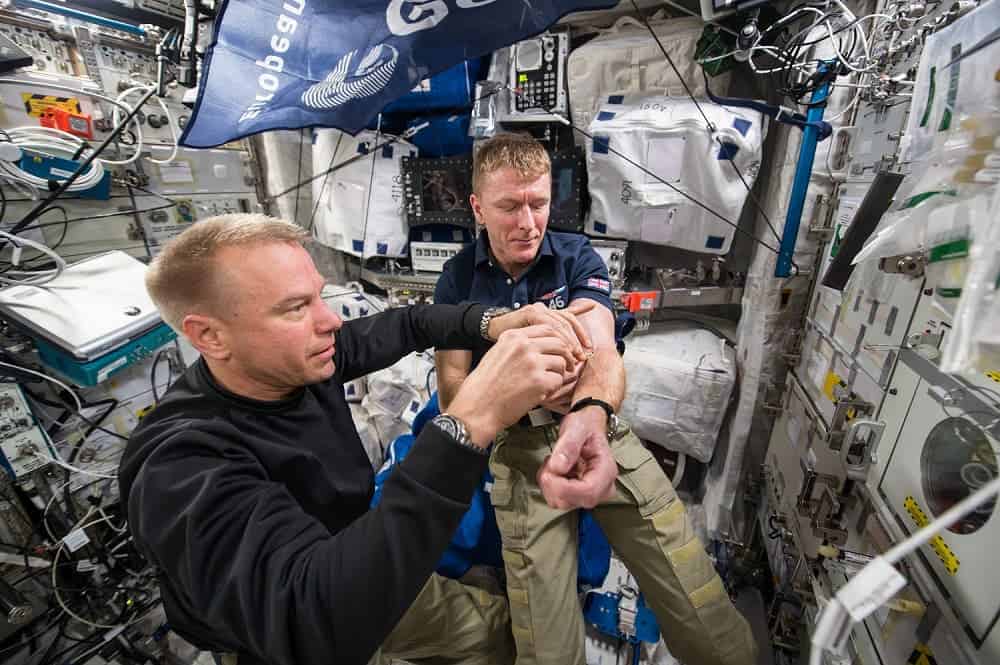Unsurprisingly, there are a lot of hazards when it comes to extended stays in space, both mental and physical. These include vestibular dysfunction, weight loss, upward fluid shift, anemia, cardiovascular deconditioning, muscle atrophy, bone loss, and even brain damage. Understanding such challenges are essential for future travel to Mars or staying on the moon. Now, a new study out of the University of Ottawa has discovered that space travel can also cause lower red blood cell counts.
The long-term study, published in Nature Medicine, of 14 astronauts over a six-month mission at the International Space Station showed their bodies destroyed 54% more red blood cells in microgravity than would normally occur on Earth. Previously, space anemia was just thought to be a quick adaptation to fluids shifting into an astronaut’s upper body when first arriving in space. It was also believed that astronauts rapidly destroyed 10% of their red blood cells to restore the balance, and that their red blood cell control returned to normal after 10 days in space. Now, those views are changing.
“Space anemia has consistently been reported when astronauts returned to Earth since the first space missions, but we didn’t know why,” said lead author Guy Trudel, a rehabilitation physician and researcher at The Ottawa Hospital and professor at the University of Ottawa. “Our study shows that upon arriving in space, more red blood cells are destroyed, and this continues for the entire duration of the astronaut’s mission.”
The destruction of red blood cells isn’t something just related to space though — it’s just that astronauts are losing much more red cells than they normally would on the ground. Here on Earth, human bodies create and destroy two million red blood cells every second. The researchers discovered that astronauts were killing off 54% more red blood cells during their extended stay. This resulted in the deaths of three million cells every second. These conclusions were the same for both female and males.
“Thankfully, having fewer red blood cells in space isn’t a problem when your body is weightless,” Trudel said. “But when landing on Earth and potentially on other planets or moons, anemia affecting your energy, endurance and strength can threaten mission objectives. The effects of anemia are only felt once you land, and must deal with gravity again.”
To determine their findings, the team measured the carbon monoxide breath samples of the astronauts. One molecule of carbon monoxide is produced every time one molecule of heme, the deep-red pigment in red blood cells, is destroyed.
No detrimental effects were recorded, though, and it is believed that the anemia is reversible. Three to four months after returning to Earth, counts were progressively returning, albeit slowly with destruction still 30% above preflight levels one year after coming home.
The fact that long-term stays in space kill off an inordinate amount of red blood cells does raise several red flags which need addressing. First, it supports screening astronauts or space tourists for existing blood or health conditions that are affected by anemia. Second, a recent study by Trudel’s team found that the longer the space mission, the worse the anemia, which could affect extended missions to the Moon and Mars. Third, heightened red blood cell production will require an adapted diet for astronauts. Finally, it is uncertain how long the body can sustain this elevated rate of destruction and production of red blood cells.
“This is the best description we have of red blood cell control in space and after return to Earth,” Trudel said. “These findings are spectacular, considering these measurements had never been made before and we had no idea if we were going to find anything. We were surprised and rewarded for our curiosity.”



